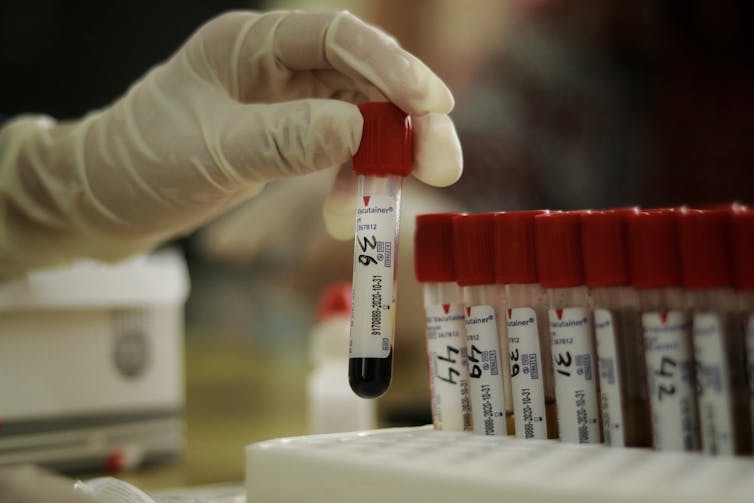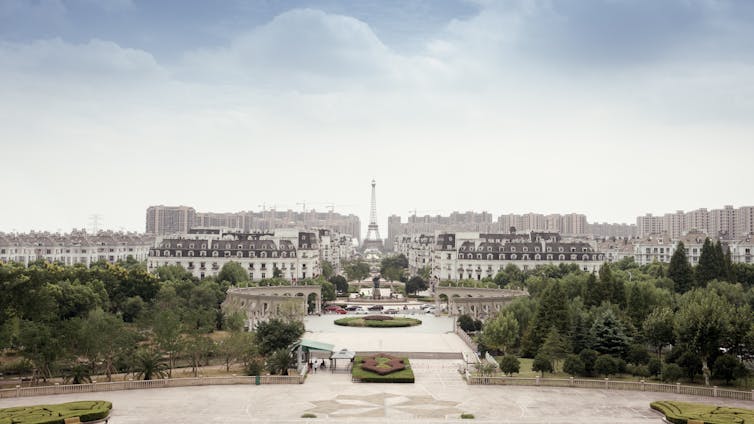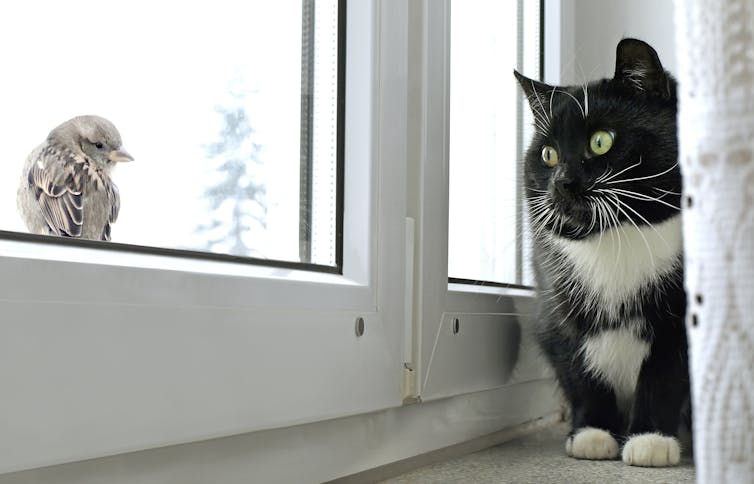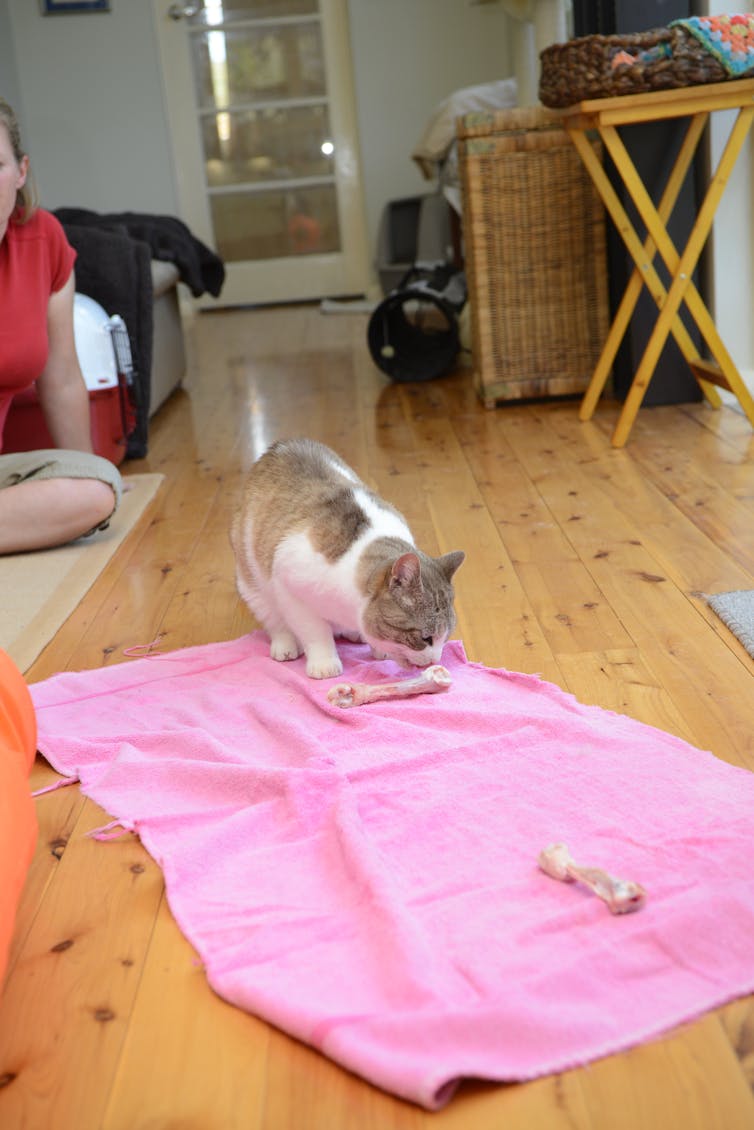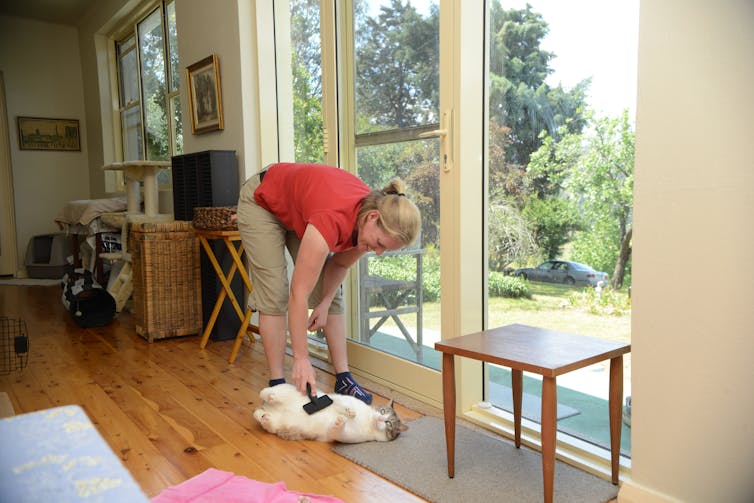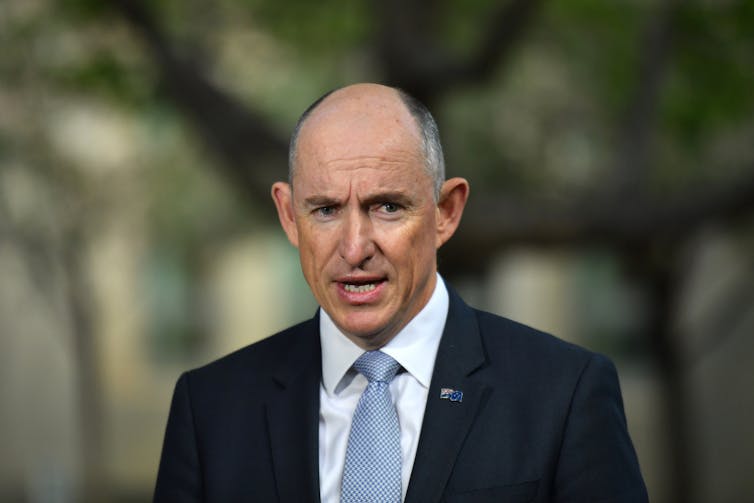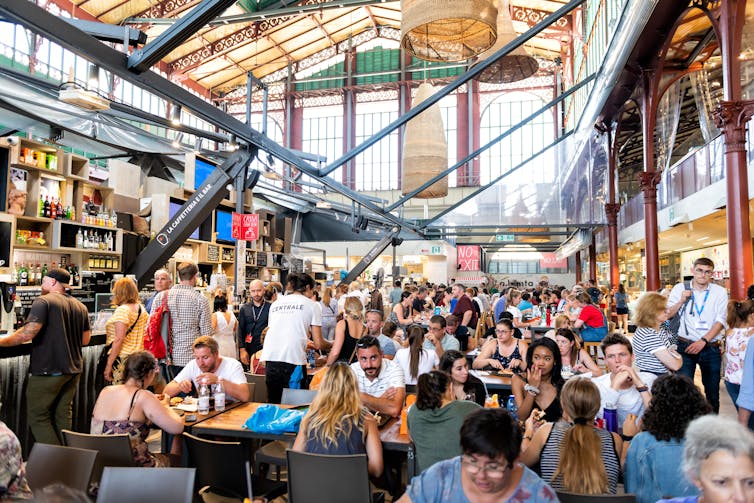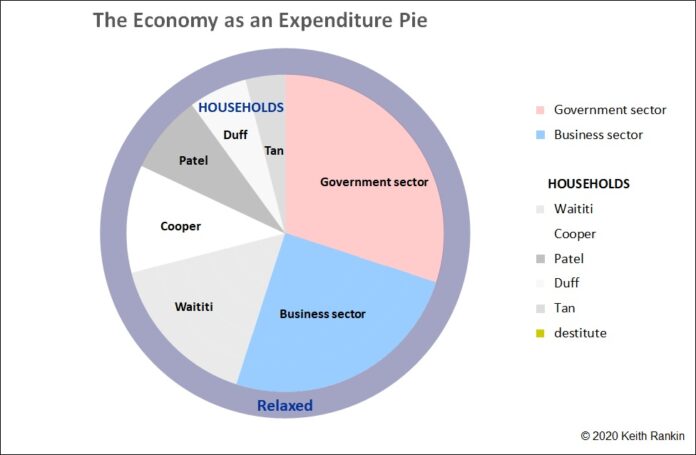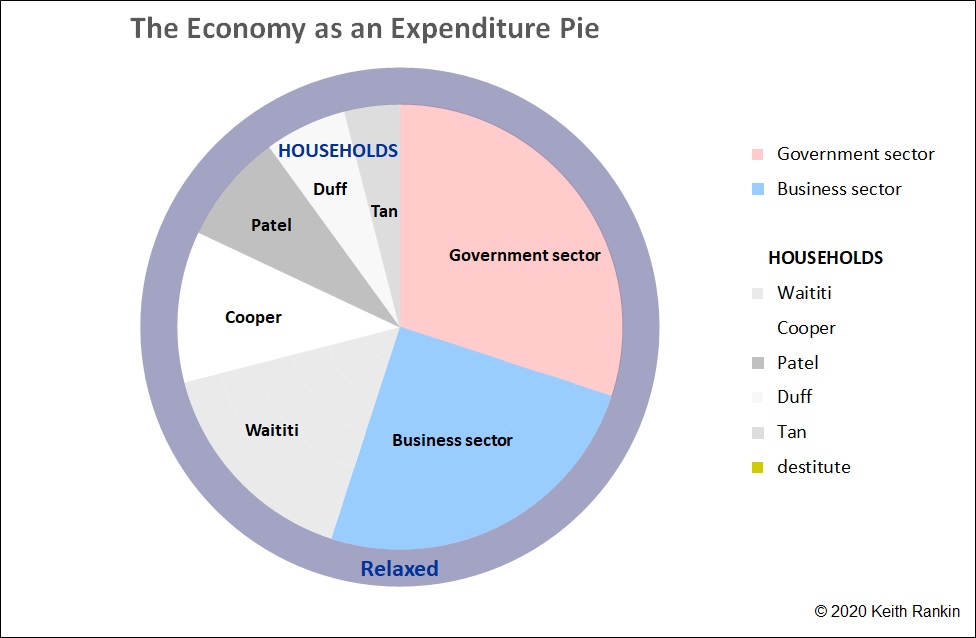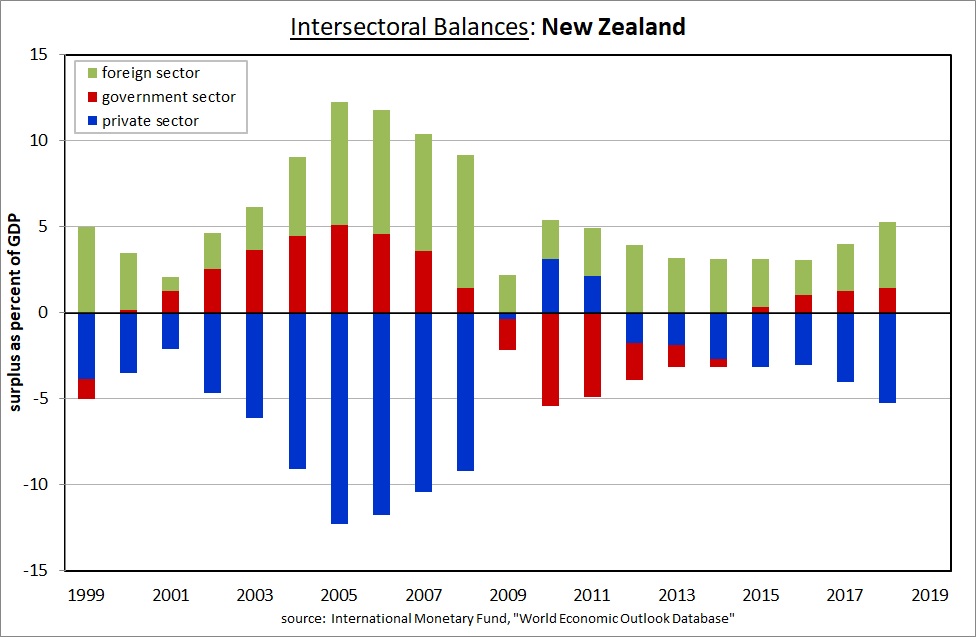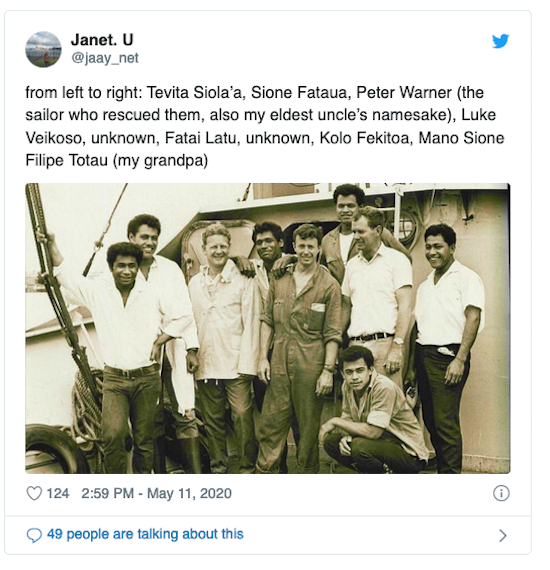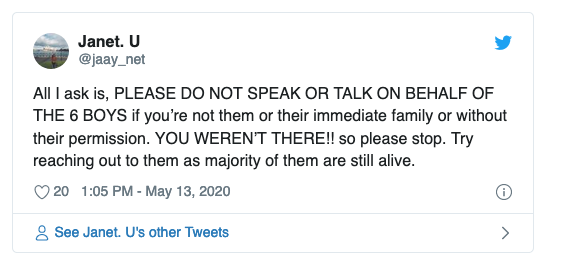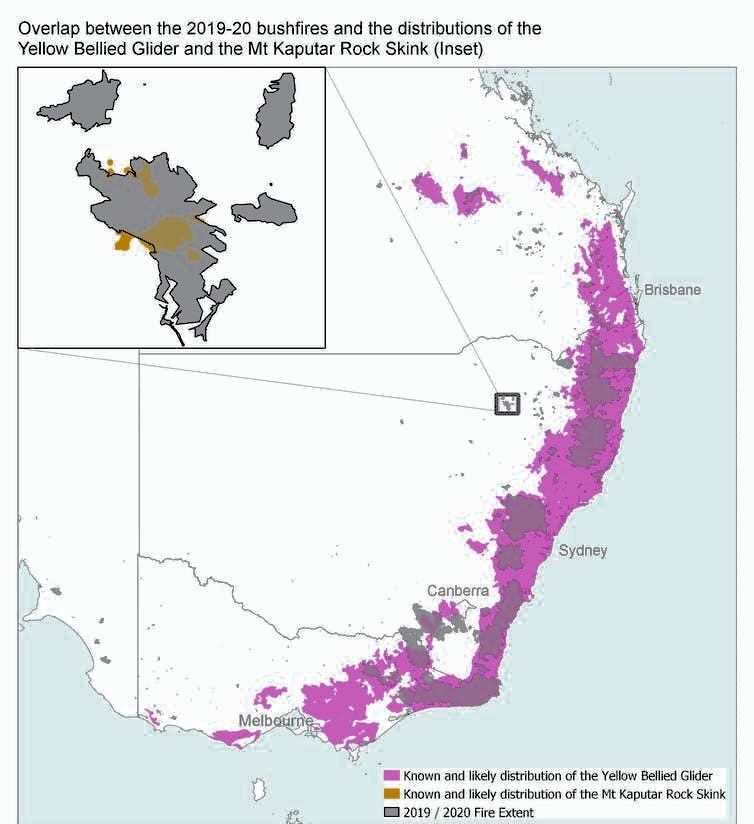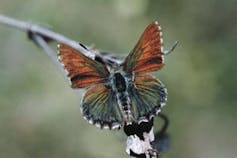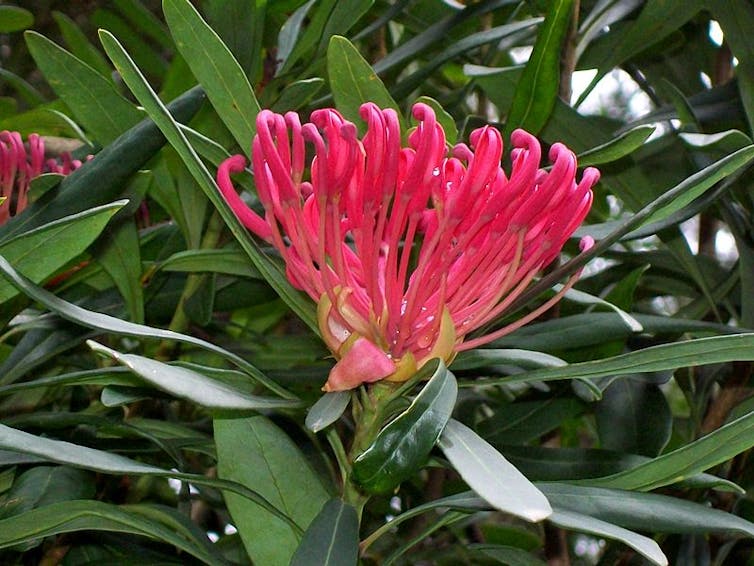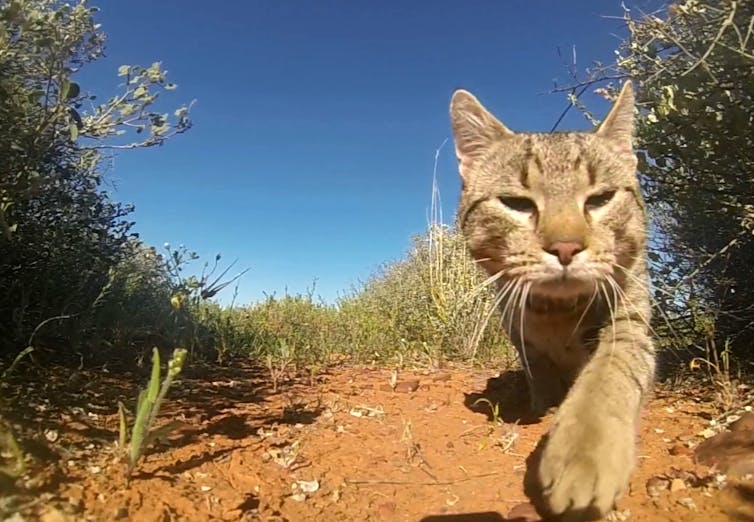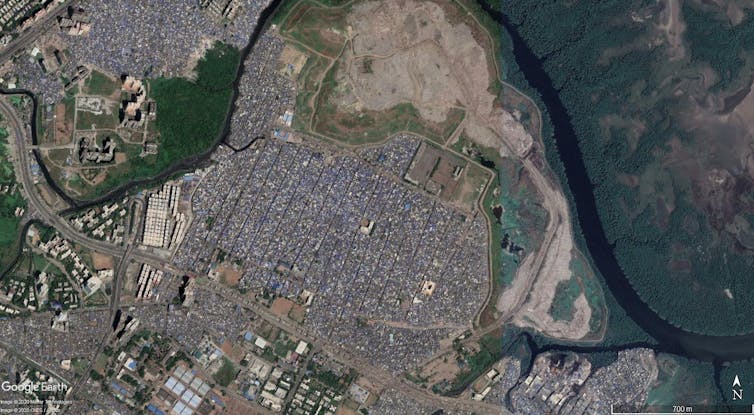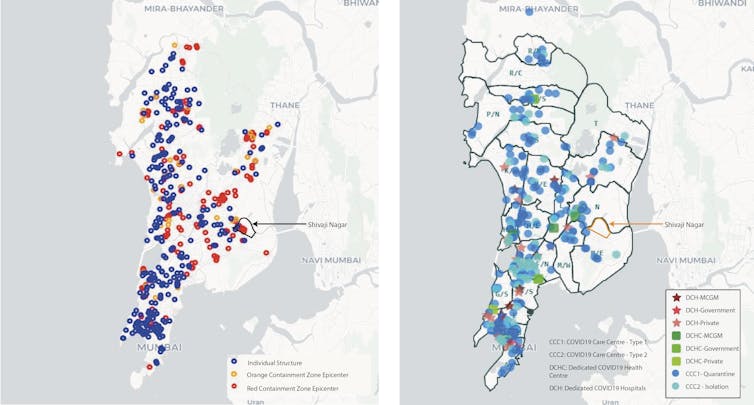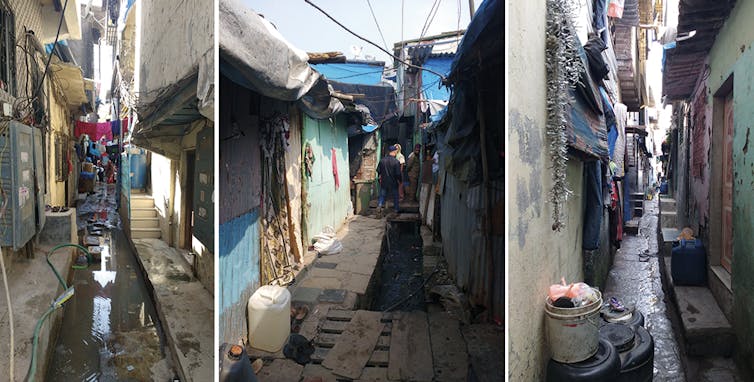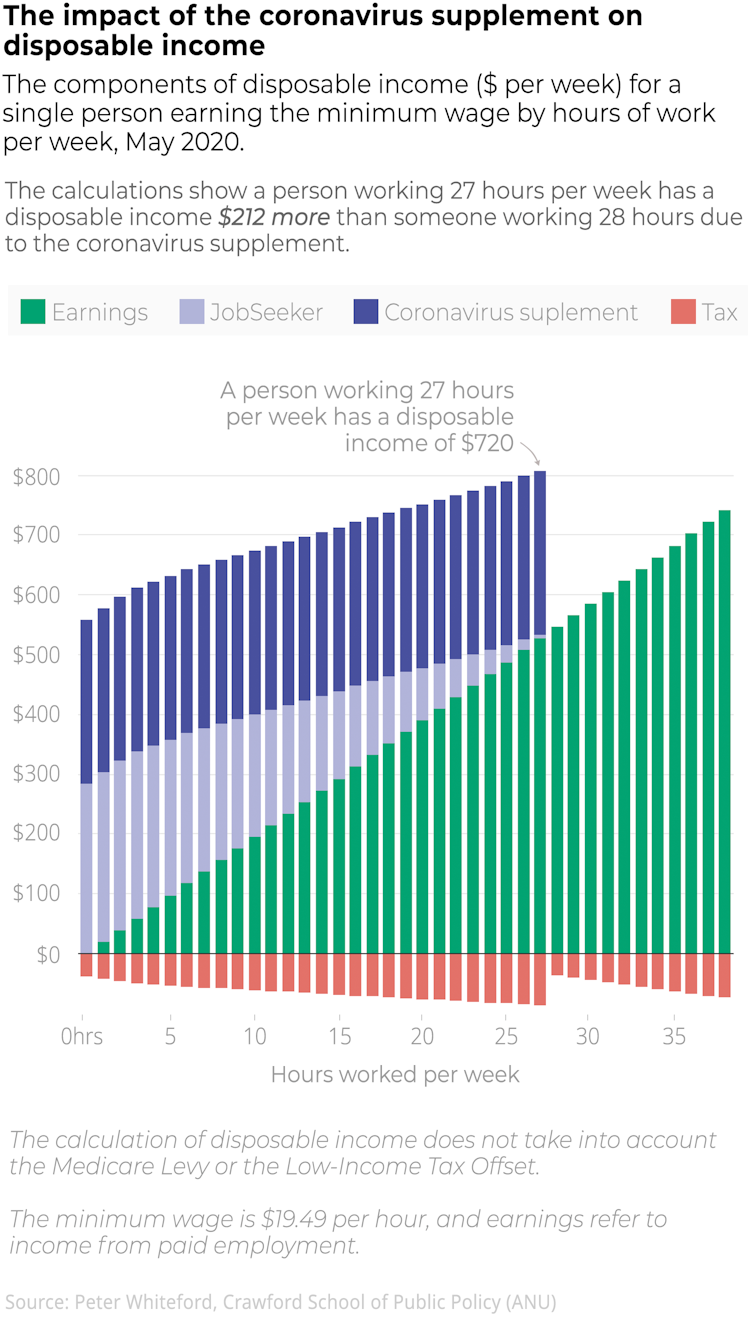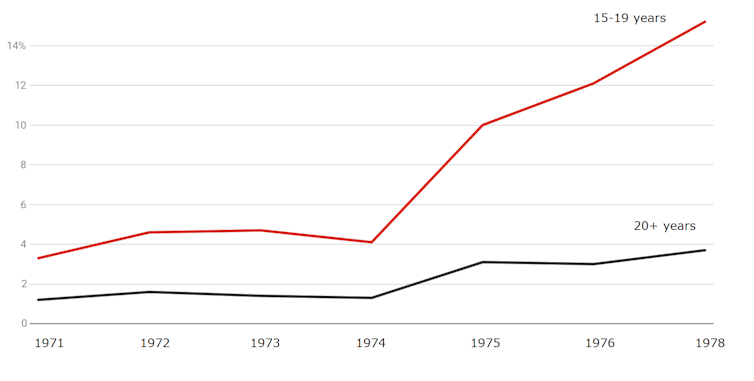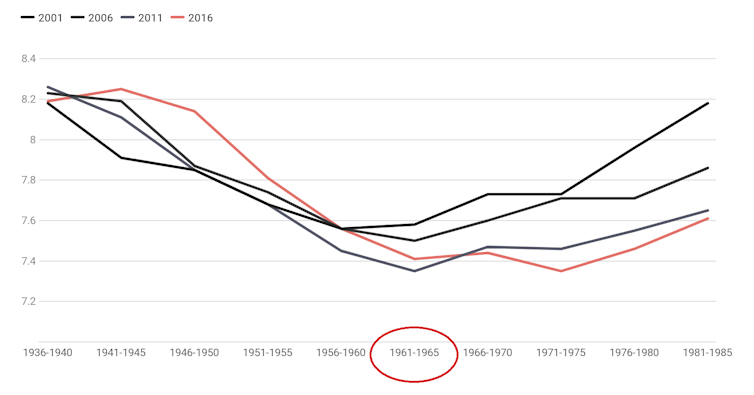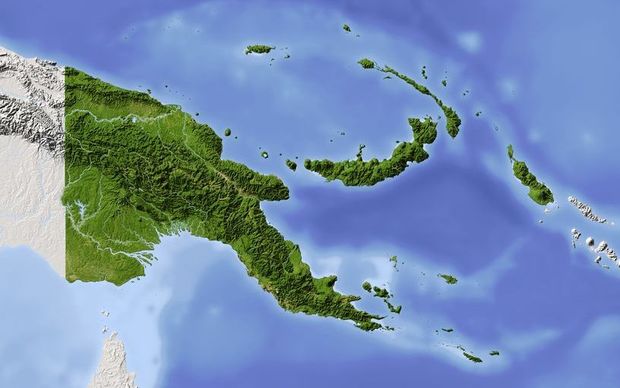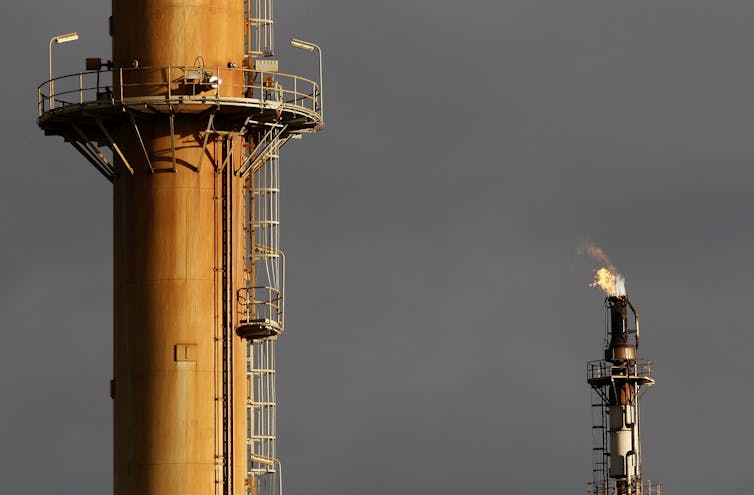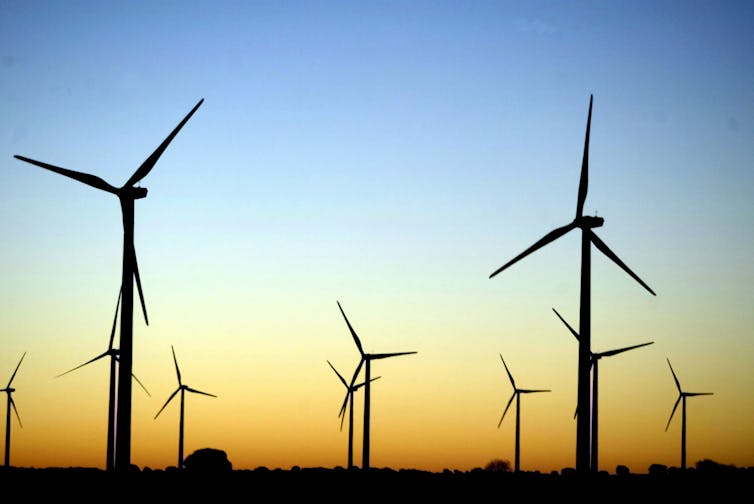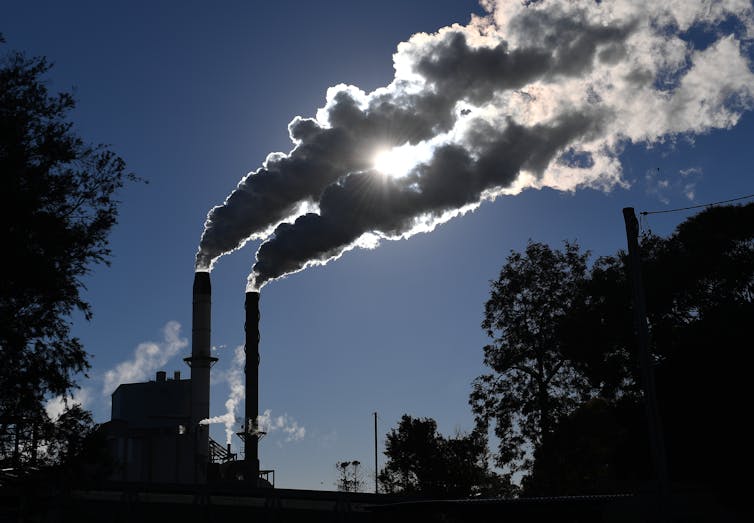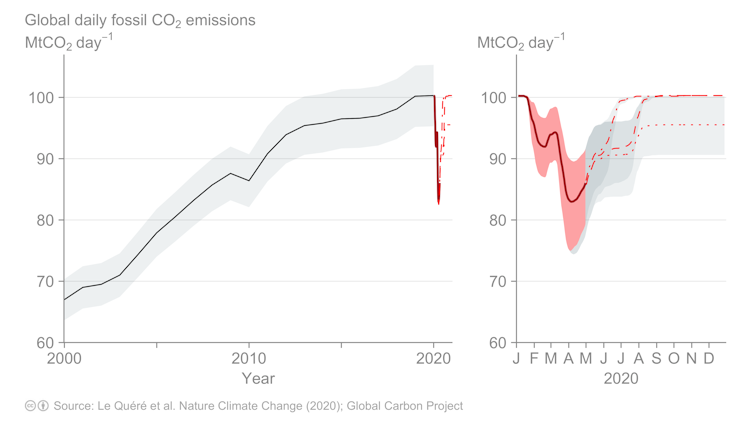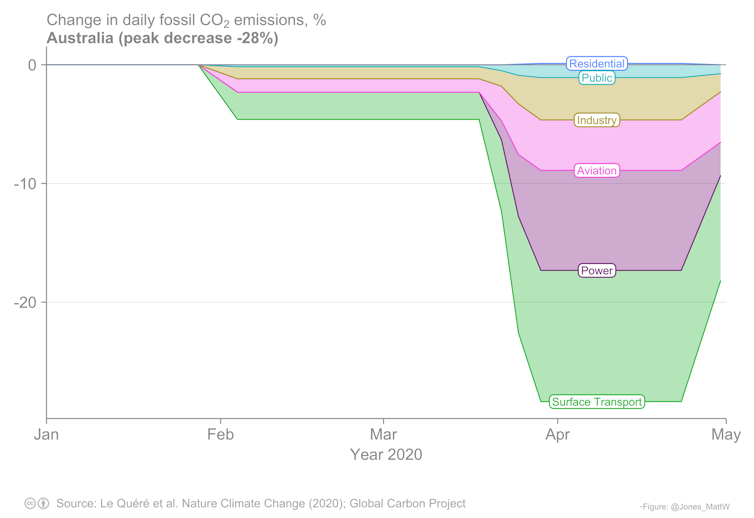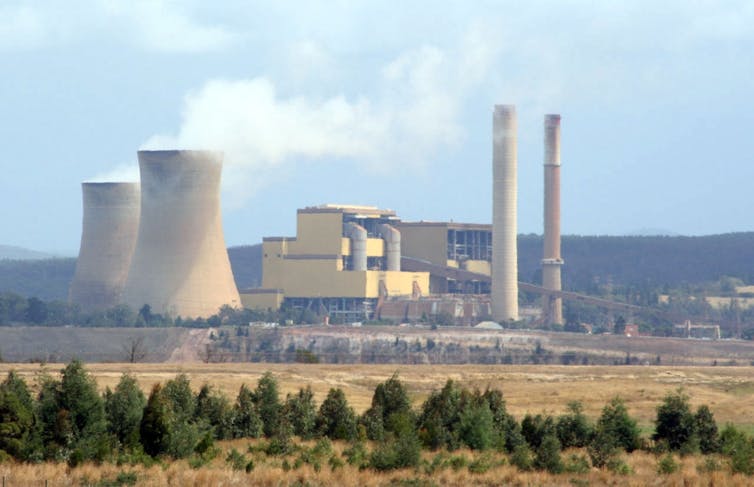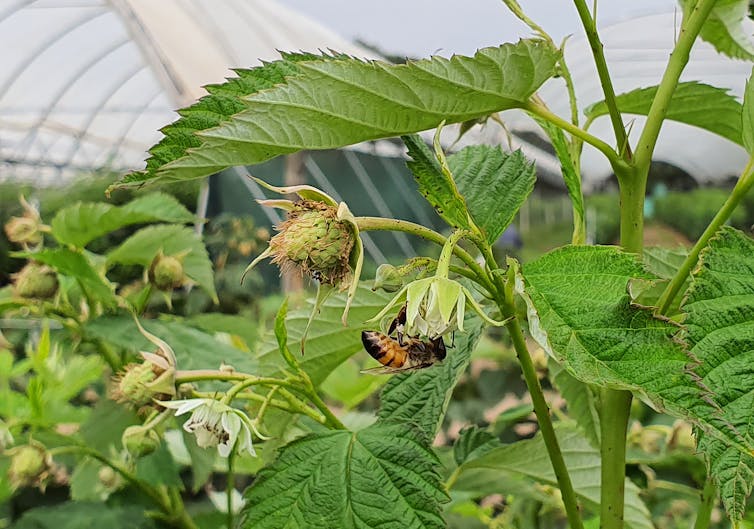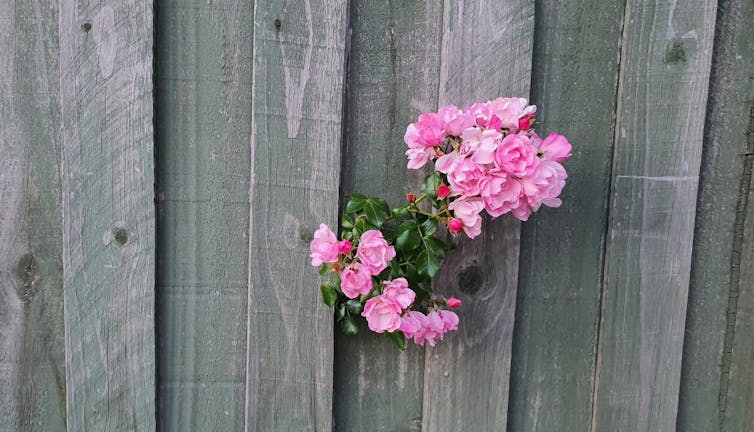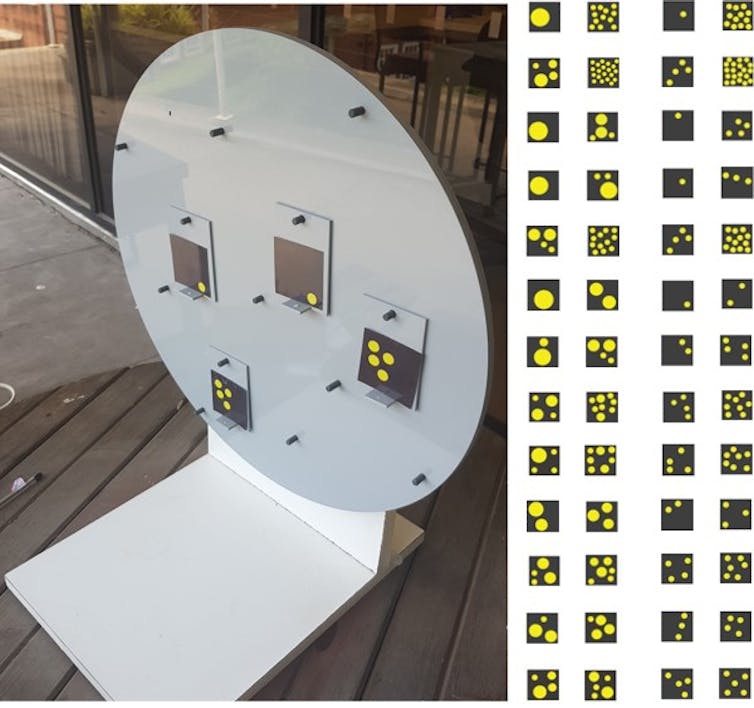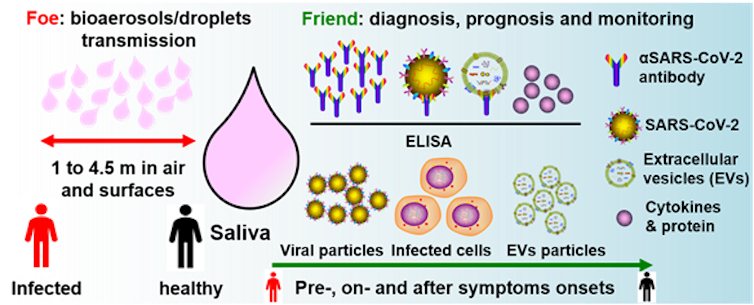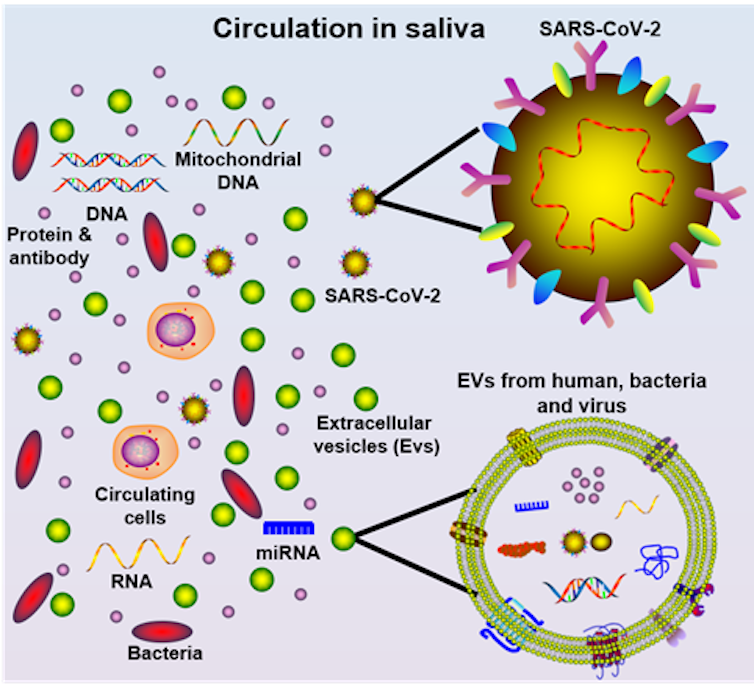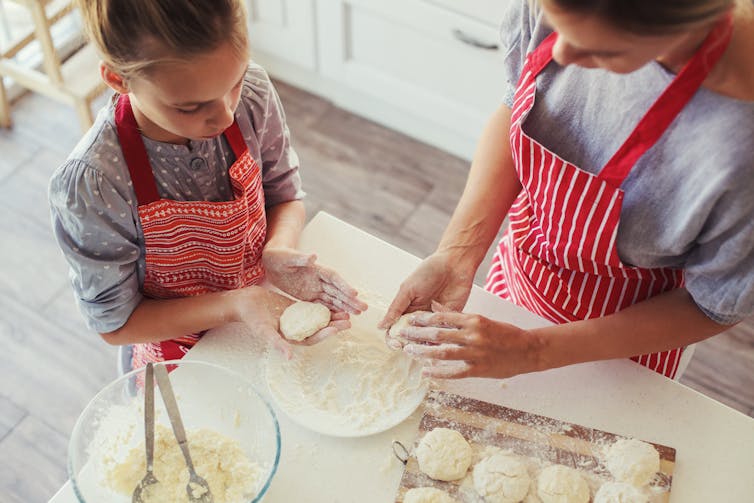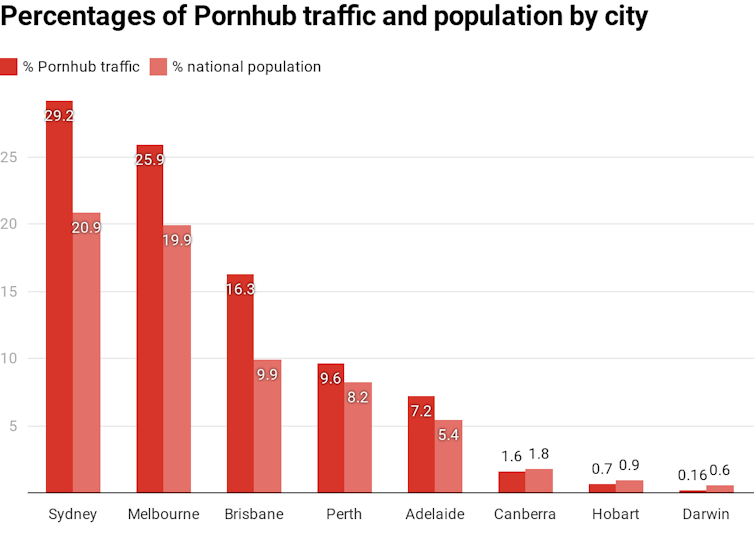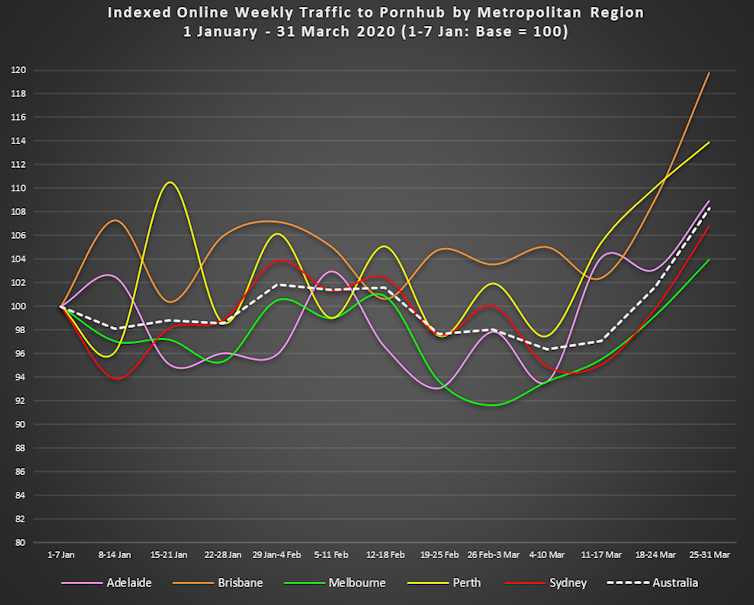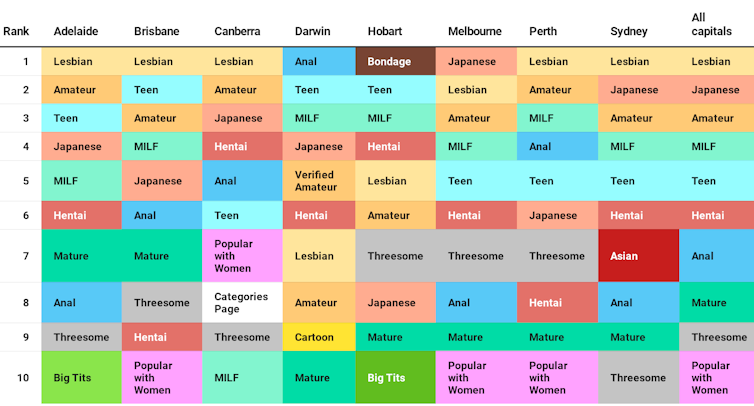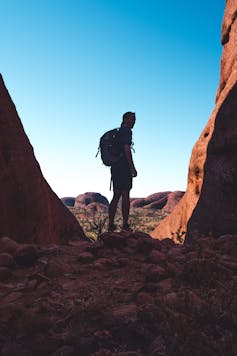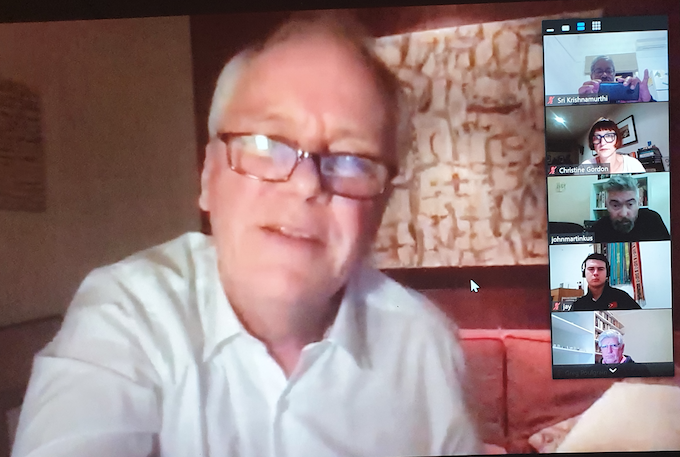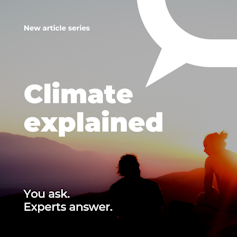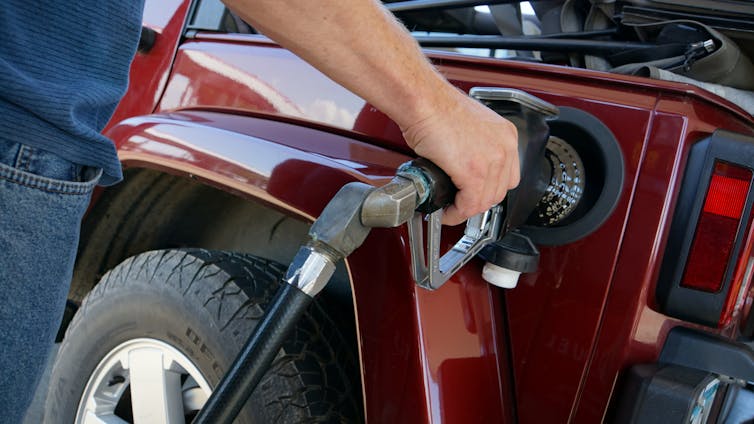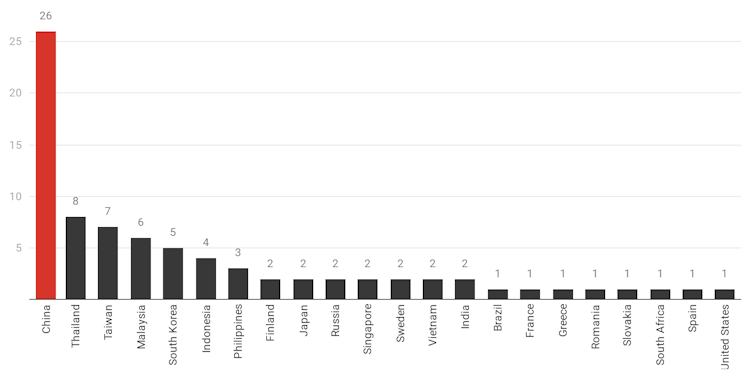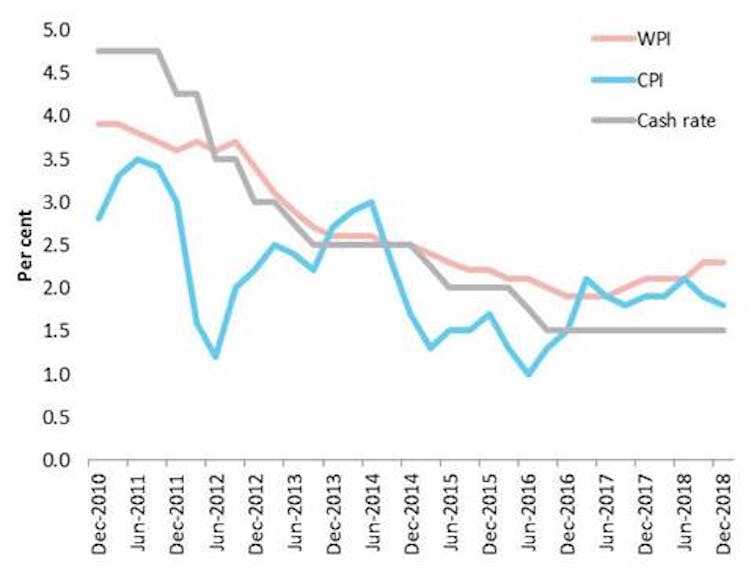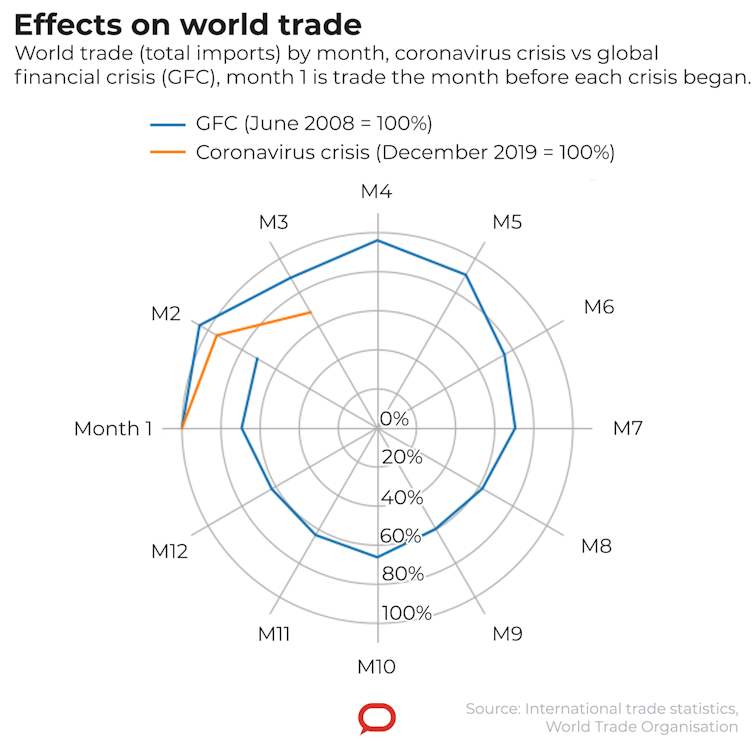Source: The Conversation (Au and NZ) – By Michelle Grattan, Professorial Fellow, University of Canberra
Labor will campaign on the flaws in the JobKeeper program in the Eden-Monaro byelection, shadow treasurer Jim Chalmers says.
“There will be so many people from Eden-Monaro who would have heard the Prime Minister say that there would be wage subsidies only to find out that they’ve either been deliberately or accidentally excluded from those wage subsidies, who can’t understand why someone who might have been on $100 a week before is now getting $750 while they’re excluded from it.”
Chalmers says he intends to campaign in the byelection – for which a date has yet to be set – and has spoken with Labor leader Anthony Albanese about doing so.
As the political debate turns to the strategy for the economic exit from the pandemic, Labor is seeking to define its differences with the government.
“We don’t want to see all of this support withdrawn from the economy in one hit, on one day, based on a faulty assumption about ‘snap back’, when the reality is that the recovery is going to be patchy, Chalmers says.
“It’s going to be longer than ideal, and different types of workers in different types of industries will feel the impacts differently. I think the Government’s policy needs to recognise that.”
The aftermath of the crisis will be the defining debate at the next election,“ Chalmers says.
“I think the next election will be about unemployment in particular. It will be about what the future economy looks like and whether we can create that inclusive, sustainable growth that creates well-paid jobs for more people and more opportunities. I think that’s where the next election will be won or lost for the government and for the opposition.”
“This is not the sort of crisis where we get to September, people forget about it, and the world moves on”
Chalmers, who worked in then-treasurer Wayne Swan’s office during the global financial crisis, contrasts the support Labor has given the Morrison government with the stand of the Coalition opposition then.
“We actually haven’t held anything up in the parliament because the priority is to get this support out the door and into the pockets of workers and businesses as soon as possible.”
“We are deliberately being more constructive than our opponents were a decade ago because we saw firsthand the costs of that kind of oppositionist approach.”
Transcripted (edited for clarity)
Michelle Grattan: Labor has given broad bipartisan support to the Morrison Government’s response to the COVID-19 crisis. But now, while it is not politics back to normal, some greater contestability is returning to the federal scene. The Opposition is challenging aspects of what’s being done at the moment, and it’s setting up lines of argument for how the exit from the crisis needs to be handled. To discuss these issues we talk today with the Shadow Treasurer, Jim Chalmers.
Jim Chalmers what does Labor think should be changed right now in the COVID measures the Government has in place?
Jim Chalmers: Michelle, I think largely the Government’s taking some pretty welcome steps, and where we think that they’re heading in the right direction we’ve said so. There are, unfortunately, some gaps in the JobKeeper program in particular. We think JobKeeper is a good idea being badly implemented and badly communicated. That’s because the Government’s taken a really worthy objective, which is to try and maintain the link between workers and their employer, and they’ve excluded too many people from it. Our job, I think, as the Opposition is to find out where they can deliver this otherwise welcome support more effectively and get more bang for buck.
MG: So, what should they do?
JC: They should include more casual workers. There are more than a million casual workers who have been deliberately excluded from the JobKeeper payments. There should be an opportunity to include more of them. The Treasurer actually has the powers in the existing legislation to change the rules with a stroke of a pen. He’s been unwilling to do that. I think they should do that. Even in the stats which have been released as recently as this week, we see that a lot of the job losses are concentrated in areas where the JobKeeper payment doesn’t apply. If we want to prevent those unemployment queues from getting even longer than they will be, then we need to consider making these payments available to more impacted workers.
MG: Do you think that the people who are now getting more money, in some cases quite a lot more money than they actually earned before the crisis, should have that benefit cut?
JC: We are certainly up for a conversation about that, Michelle. I think that’s one of the genuine concerns that people have in the community. We know all of people who might have been earning $100 or $150 a week, all of a sudden making $750. That’s a good way of illustrating that the improvements that we’ve been suggesting to JobKeeper are not necessarily just about spending more money; they’re about spending the money that the Government has allocated more effectively. It’s bizarre, frankly, to think that there are casual workers, breadwinners in families, aviation workers, university staff, and council workers all excluded from the JobKeeper payment, at the same time as there are workers who are making much more now than they were before. So, our point is, if the Government wants to propose a way to better target this welcome support, then we’re up for that conversation because we can be getting more bang for buck for the substantial money that the Government’s put on the table here.
MG: So, do you believe that any changes to JobKeeper should be kept within the same funding envelope, or will more money have to be made available?
JC: In a crisis as substantial as this one, I don’t think we should be too rigid about it. We should think about what the overriding objectives are. The overriding objective is to keep as many people as possible attached to their employer, because the more we can limit this carnage in the labour market, the easier it will be to recover from it. The longer the unemployment queues get, the harder will be to recover from this crisis. That’s our overriding objective, and so we need to work out where we can get maximum bang for buck from all these dollars. It is an eye watering amount of money, as you know, that’s been committed here. All we’re saying is, let’s spend it as effectively as possible, and let’s try and satisfy that main objective which is to keep as many people in work as possible.
MG: The JobKeeper program is due to run out in September. Do you think it should be extended regardless, or do you think a decision on whether to extend it should be made closer to that cut-off date?
JC: I’d be interested to see what the Treasury is advising, Michelle. Certainly, on the face of it, there’s a case to be made to, at the very least, taper it or maybe target it to those specific industries where unemployment will be an issue for longer, where unemployment will be higher for longer. If you listen to the Reserve Bank, Deloitte Access Economics, or the International Monetary Fund, none of those organisations share the Prime Minister’s assumption that all of a sudden on the last Monday of September, we’re going to wake up and all of these challenges will have disappeared. There’ll be parts of the economy that will recover and that’s a great thing. Some might even recover more quickly than others; again, that would be a good outcome, but we need to be realistic about it. We don’t want to see all of this support withdrawn from the economy in one hit, on one day, based on a faulty assumption about “snap back” when the reality is that the recovery is going to be patchy, it’s going to be longer than ideal, and different types of workers in different types of industries will feel the impacts differently. I think the Government’s policy needs to recognise that. I hope that they are rethinking the fact that all this support gets withdrawn from the economy in that last weekend of September because I think the challenges are more complex than that, and the Government needs to be smarter about it in response.
MG: So, in the broad, do you think we’re going to come out of this downturn in the “V” shape, or will it look more like a “U” shape, or even an “L” shape?
JC: : I think it would be good but unrealistic to expect the whole economy to come out of this in a “V” shape; again, maybe specific industries will be in that category. I think more likely it’s going to be a combination of those, depending on which industry we’re talking about. I think the recovery is not going to be immediate for everyone. Where that worries us most is in the labour market. If you look at those numbers put out by the Reserve Bank and the other institutions, they’re expecting unemployment to be higher for longer. Certainly in the labour market, in aggregate, we don’t expect the “V” at this point, probably something a bit more like a “U”. But if the Government gets its policy response wrong, then we’re in the territory of a “W”. Craig Emerson and others have spoken about this, where just as the recovery is looking likely, it gets cruelled by some bad policy decisions and we end up bouncing back and forth. I think ideally, what the Government would be doing is hoping for the best but planning for the worst. That means having policy which adapts to the fact that the recovery will not be immediate. It will be patchy, and it will be long.
MG: Scott Morrison is floating the idea of some sort of employer-union-government compact to promote growth and reform as we try to get back to some sort of normality, but a better normality. Do you think this is desirable or achievable?
JC: Obviously business, government and unions should have the capacity to work together. It’s shouldn’t be a remarkable thing that a government is at least speaking along those lines. Certainly, when Labor’s in government that’s the intention, to work with business and unions to try and get good outcomes in the economy. The only reason it sounds remarkable or interesting is because the Government spent seven years running down the unions, attacking the unions, and diminishing their contribution to the Australian social fabric. Then all of a sudden we get this rhetoric from the Prime Minister. Let’s see how he goes about it. Let’s see whether he’s serious about it, whether he actually wants to find common ground, or if he’s just reading from a set of talking points given to him by a focus group. It’s clear in the community that people have higher expectations of us in times like this to try and work together. I think his language reflects that but we don’t know yet whether his actions will reflect that in the recovery as well.
MG: There has been of course, in recent weeks, a lot of talk about trying to use this crisis to achieve some economic reforms. What would you see as the top three priorities for change?
JC: Look at the challenges we’ve got, right? We’re going to have a challenge in the labour market; we’re going to have higher unemployment for longer. We had a whole series of issues in the economy even before the crisis hit; flat productivity, business investment going backwards, all of those sorts of things. When you consider all of those sorts of challenges, clearly, we need to get some investment certainty as it relates to energy policy, the absence of a civil energy policies been a handbrake on investment and growth for too long, so energy has to be a high priority. When you think about the makeup of our industries, we need to do a better job commercialising our ideas, and that comes back to research and development, and science which has been undermined and hollowed out for too long. Thirdly, we’ve got to get the human capital side of things right. That means making sure that people can train and retrain throughout their working lives; that we ditch this assumption that the old education and training system will be appropriate for a future dominated by technology. If we do all those three things, those three priorities, energy, ideas and human capital, then we give ourselves a chance to grow out of this crisis the right way, which is more inclusive, more sustainable and more focused on the future, and less reliant on all of the sorts of proposals which got us into this mess in the first place.
MG: But isn’t it true that governments of both complexions have been talking about commercialising ideas, and improving the labour force’s skills for many years, and yet it never seems to really adequately bear fruit?
JC: Clearly there’s unfinished business in each of those areas that I’ve identified. The key here is to work out what we learn from this crisis. Principally, just how precarious and insecure people’s work lives are, just how serious that problem is with business investment and productivity. These are the sorts of solutions that we needed before the crisis, but the crisis has accelerated the challenges in our economy so that they become more acute. We’re up for a conversation about that. We’re up for a big conversation about the future of the economy. We don’t want to see it just narrowed down to the old ideological obsessions that the Government’s been peddling for some time.
MG: People talk about the fact that there are too many jobs that are casual jobs rather than permanent jobs, but isn’t that just the nature of the modern economy? Isn’t that very hard to change in practice?
JC: Clearly, it’s going to be a difficult trend to turn around but that doesn’t mean we should give up on it. One of the key learnings from this whole diabolical economic crisis is that some of the protections that are absent from casual or insecure work, people really need to be able to rely on them. At the start of this crisis, there’s was a lot of conversations about sick leave. There’s been a lot of conversations about portable entitlements and the like. For some people, casual work makes sense and it’s what they want. But a lot of people are working in these insecure jobs out of necessity rather than out of choice. If we care about job security financial security, de-risking life for more and more of our people, then clearly this is one of the issues that we need to address.
MG: But when businesses are in a lot of trouble there’s surely going to be maximum pushback against moves to give people more security and more entitlements, however desirable that might be in itself. How do you overcome that obstacle?
JC: I think on one level that’s true, Michelle. As you’d appreciate, there wouldn’t be a working day where I don’t talk to at least a couple of businesses in the economy, and one of the things that I’ve drawn confidence from is the fact that business recognises the challenges which have been turbocharged by this crisis. They are as susceptible as anyone to the fact that there hasn’t been enough demand in the economy because wages have been stagnant for so long. I think there is a mood amongst the business community to see what can be done, to see where we can create win-win situations. Sometimes, of course, it will get bogged down in the zero-sum conversation but at other times I think people just want to be able to employ more Australians, to pay them well, and for everybody to succeed together. We need to capture that spirit. We shouldn’t assume that all businesses will take a selfish approach to this. I’ve been heartened by the way businesses have been talking in the last little while and I hope it lasts.
MG: What projects do you think will be best to get businesses and employment going again fairly rapidly? The big infrastructure projects, and I think Anthony Albanese the other day was talking about things like the very fast train, don’t necessarily fit where there are the most business collapses and job losses. They’re often in the hospitality industry for example, tourism and so on. So, what’s going to be fit for purpose?
JC: I think you’re absolutely right. There’s the long-term large-scale infrastructure which is crucial to productivity and investment. Some of those projects have begun. Where I’m from, Cross River Rail will make a big difference to the future economy of south east Queensland, for example. You’re right that there’s a gap in the near-term. That’s why Anthony Albanese and Jason Clare have been talking a lot about social housing, because they recognise the construction sector fears in two- or three-months’ time that their work will fall off a cliff, and that there will need to be something done to fill that gap. That’s a good example of it. There’s a role for local governments who have been talking about the smaller-scale infrastructure and maintenance projects which are labour intensive and have a lasting benefit to local communities. The advantage of that is that you can target them to some of the areas impacted along the lines of what you just described, whether it’s tourism communities or other kinds of communities affected. I think there is a need to fill the gap in the near-term. There are smaller-scale projects which the Government is no doubt considering. We think amongst that should be some sort of commitment to social and affordable housing as well.
MG: Now just talking about your home state of Queensland, your Premier has been coming under a lot of flak for not reopening the Queensland border and indeed talking about it still being some quite long time away. Is she being too cautious, or is this justified? Surely this will harm the Labor Government up there, which is a up for election in I think October?
JC: There is an election in October, but I think these sorts of decisions shouldn’t be driven by the politics of the day. They should rely really heavily on the expert advice of the medical community. That’s what Annastacia has been doing. In fairness to her, Queensland has performed extraordinarily well when it comes to new infections and transmission of this virus. It’s appropriate that her Government be as careful and cautious as they can be when it comes to reopening the borders. There is no bigger champion than Annastacia of the tourism industry in Queensland. We all recognise that something like every 10th job here is reliant in one way or another on tourism. We know how heavily a lot of our regional communities rely on tourism dollars in particular. I think she’s taking a careful and cautious approach. She has mentioned September, but also in the same interview said that these things will always be under review month-by-month, probably week-by-week, and that nothing’s set in stone. I think that makes a lot of sense. When you consider that different states have got different levels of infection, transmission and all the rest of it, I think it’s appropriate that Premiers – not just Labor Premiers, not just Premiers of this state where I’m from – take the best advice and proceed cautiously in a way that sees our businesses reopen as soon as it’s safe to do so but not before then.
JC: Now, we find ourselves in the middle of a trade dispute with China, just at a time when we really need to maximise exports because some areas of export -the tourism industry, the education industry – have obviously collapsed. Do you think that the Government is handling this whole affair competently, properly? Or should it be doing different things?
JC: First of all, we desperately need the Government’s efforts to succeed and so we are doing our best to be as supportive as we can be. We do genuinely want these really serious issues which have flared up to be dealt with to the satisfaction of our people and our industries, but also so that the big mutual benefit of this trading relationship can be properly realised. We’ve expressed our concerns in the last couple of weeks, principally through Penny Wong and Anthony Albanese and others, that perhaps it would be more effective from the Government’s point of view if the Foreign Minister took a more prominent role in this discussion, so that we see more of her or more of the Prime Minister and less of the Liberal and National party backbench, which seem to be trying to outbid each other with some of the language that they are adopting. Let’s have an approach which is driven from the Prime Minister and the Foreign Minister rather than from the Liberal Party backbench. Let’s make sure that we conduct ourselves in a way that is geared towards resolving these issues and not making them worse.
MG: But do you believe that Australia’s international stands, for example on the inquiry into the virus’ origin and handling, should be robust even if that brings some costs in terms of trade?
JC: Anthony Albanese, Penny Wong, and others have all said that we support the Government’s intention to get to the bottom of how this virus broke out. We’ve been very clear about that. Clearly, as you manage this you need to be cognisant of all the implications of that. Clearly you need to put the work in with international friends and partners. Clearly you need to proceed cautiously. We have said from the beginning that we think it’s appropriate that that inquiry take place, and that the Government needs to do the work to make sure that that happens in a way that is useful and constructive.
MG: Rather inconveniently for both sides, I guess, there’s this by-election in Eden-Monaro coming up. How important is this by-election for Labor? Will you be doing some campaigning there on the ground? And what do you think will be the mix of national and local issues in determining the outcome?
JC: I do intend to do some campaigning in Eden-Monaro. I had a long conversation with Anthony Albanese on Saturday about what that might look like. Obviously, it’s a bit harder to get around at the moment, to get to and from, particularly when you’re not within easy driving distance, but that’s my intention. I’m desperate to get behind the campaign. Kristy McBain is really a terrific candidate. I had a good conversation with her the other day as well. I’m keen to get into it. I think the unusual thing about Eden-Monaro this time around is that there’s not an easy demarcation between national and local issues. This was an area which was devastated by bushfires and devastated by the Prime Minister’s neglect of some of these communities. The two things come together. Clearly, that will be a big part of the campaign. Kristy McBain being a local mayor from that area, deeply enmeshed in the community and in the bushfire response, means that the local and the national will be merged in ways that we’re not really used to. The Government’s response and the people they’re leaving out of the JobKeeper payment will be issues too. I look forward to prosecuting them however that’s possible in the next few weeks.
MG: So you think JobKeeper will be a big issue in that campaign?
JC: Absolutely. There will be so many people from Eden-Monaro who would have heard the Prime Minister say that there would be wage subsidies only to find out that they’ve either been deliberately or accidentally excluded from those wage subsidies, who can’t understand why someone who might have been on $100 a week before is now getting $750 while they’re excluded from it. I think that will be an issue in Eden Monaro, along with all of the other issues that we’ve talked about.
MG: And looking to the next general election, do you think that the COVID exit will be a defining debate at that time, or do you think we’ll have moved on by then?
JC: I don’t just think it will be a defining debate. I think it will be the defining debate. I think the next election will be about unemployment in particular. It will be about what the future economy looks like and whether we can create that inclusive, sustainable growth that creates well paid jobs for more people and more opportunities. I think that’s where the next election will be won or lost for the Government and for the Opposition. This is not the sort of crisis where we get to September, people forget about it, and the world moves on. The recovery will be patchy. The Government has gotten some things right, but some things wrong. We should expect that all to feature whenever the election is, whether it’s next August or later than that.
MG: How constraining will this crisis be on what Labor can offer at the election? Clearly, it’s going to have a less heavy policy bag than it took to the last election which proved to be counterproductive. But it’s going to be very constrained isn’t it, in a budgetary sense, in what positive policies it can put forward?
JC: There will certainly be very substantial budget constraints that this Government will have racked up. It’s an extraordinary amount of debt. What’s not recognised is that they had more than doubled debt even before the crisis had hit. Obviously that’s a constraint. But the constraint is to make sure that we get maximum bang for buck. I think we’re already headed down a path where perhaps we could have been more focused in our policy offerings in the election. Now the real onus is on us, and not just us but the other side as well, to make sure that the commitments that we make can make a real difference, whether it’s low unemployment or to meeting some of those other economic objectives. I think that’s broadly recognised in both the major parties that the next election will be very different in that regard.
MG: Just in terms of how this crisis is affecting you closer to home, your own work, what difficulties have you found? What pressures? You must have been able to get around the boardrooms, for example, for a while?
JC: You’d be surprised, Michelle. I mean, we’ve adapted pretty quickly, I think, as have a lot of workplaces. I’ve done a heap of boardroom consultations. I’ve done some of those with Anthony Albanese as well. We found a way to make it work with the appropriate technology. Just this coming week alone, I’ve got chambers of commerce, I’ve got a major think tank, I’ve got other organisations. We found a way to make it work. It’s harder in terms of constituent contact. We’re doing a lot of that by phone and by email, whereas I’m used to being a bit more engaged directly with people out and about in my community. Even then, people are understanding and people adapt. I think the interesting thing will be, not just in our line of work but across the economy, what things look like after the crisis has subsided a bit. I suspect that most people will want a bit of the best of both worlds; a little bit of working from home, a little bit of working from the office. A lot of companies will see what they can do to accommodate that.
MG: I’m surprised that companies wouldn’t just say to politicians, especially frankly Opposition politicians, we’ve got so much on our plate at the moment, so many problems, just come back in six months and talk to us.
JC: Precisely the opposite has been true.
MG: That’s interesting.
JC: I spend most of the day in Zoom conversations or teleconferences. The engagement with business has gone up rather than down. I am so grateful, Michelle, that even very big CEOs, chairs of companies, boards, and peak organisations have been really willing to compare notes, to make sure that the debate is well informed, but also to make sure that we’re working together to try and work out what the place looks like afterwards. It’s been really quite extraordinary, the level of engagement, including with the banks, the peaks, the big retailers, all of that. I really couldn’t fault them for the way that they’ve engaged with the Opposition, and I assume with the Government too.
MG: Just finally, you were in treasurer Wayne Swan’s office during the Global Financial Crisis. How would you compare the two crises?
JC: We’ve avoided recession then, as you know, and most people think that’s unlikely this time around. That’s an obvious difference. I think there’s a different kind of complexity this time around in that the Government’s trying to keep the economy alive at the same time as they are trying to shut big sections of it down. That’s a “one foot on the accelerator, one foot on the brake” kind of a problem. We had a different set of complexities around the financial system a decade or so ago. I think the other big difference is the then-Opposition during the Global Financial Crisis settled into a position of voting against some of the measures that we were proposing to stimulate the economy.
MG: That was the second round?
JC: The second round, the bigger stimulus was opposed in the Parliament by the Liberals and Nationals. This time around under Anthony’s leadership what we’re trying to do is be constructive. We actually haven’t held anything up in the Parliament because the priority is to get this support out the door and into the pockets of workers and businesses as soon as possible. That’s a big difference, too. We are deliberately being more constructive than our opponents were a decade ago because we saw firsthand the costs of that kind of oppositionist approach.
MG: Jim Chalmers, thank you very much for talking with us today.
New to podcasts?
Podcasts are often best enjoyed using a podcast app. All iPhones come with the Apple Podcasts app already installed, or you may want to listen and subscribe on another app such as Pocket Casts (click here to listen to Politics with Michelle Grattan on Pocket Casts).
You can also hear it on Stitcher, Spotify or any of the apps below. Just pick a service from one of those listed below and click on the icon to find Politics with Michelle Grattan.






Additional audio
A List of Ways to Die, Lee Rosevere, from Free Music Archive.
Image:
Joel Carrett/AAP
– ref. Politics with Michelle Grattan: Jim Chalmers on JobKeeper’s flaws and the Eden-Monaro byelection – https://theconversation.com/politics-with-michelle-grattan-jim-chalmers-on-jobkeepers-flaws-and-the-eden-monaro-byelection-139035
